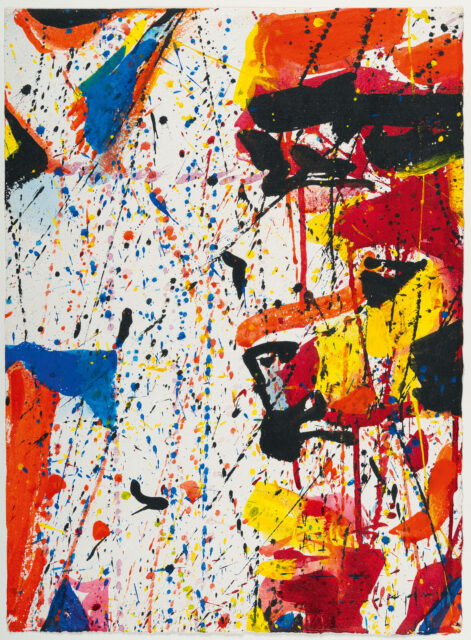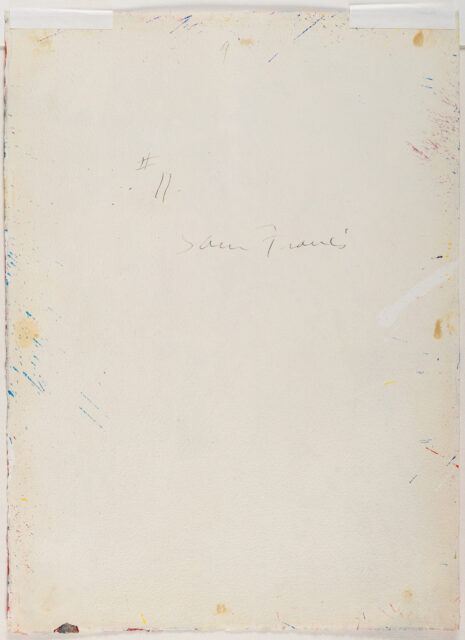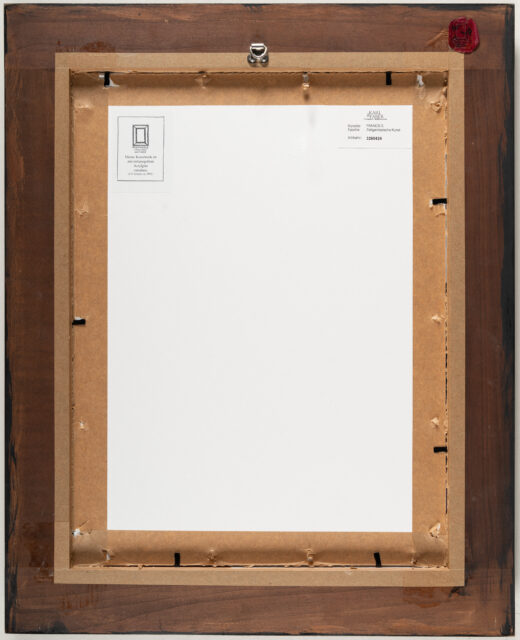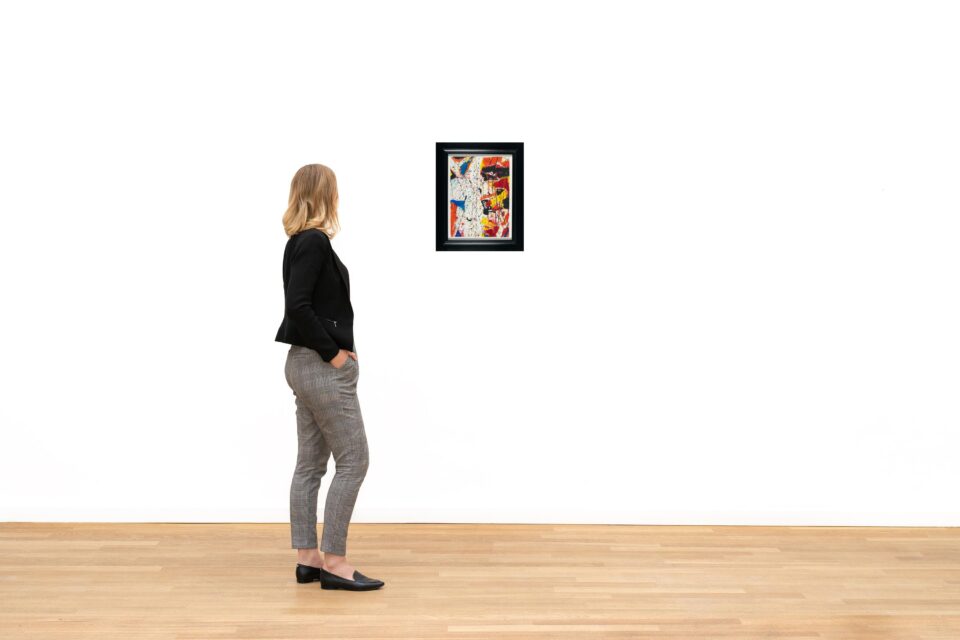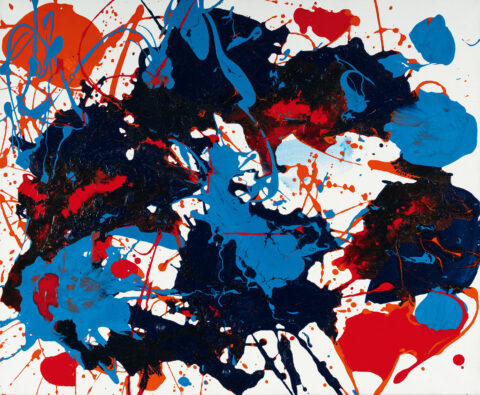
Untitled (SF59-554)
Details
The work is listed in the “Sam Francis: Online Catalogue Raisonné Project” under the archive number SF59-554.
Provenance:
Galerie d’Art Moderne, Basel;
Art dealer Hermann Reichard, Wiesbaden;
Gallery Änne Abels, Cologne;
Private collection, Germany, acquired from the aforementioned c. 1961;
Private collection, Europe.
Description
– Particularly attractive work of great colour intensity and dynamism from the sought-after early work period
– Sam Francis was influenced by Abstract Expressionism, was at times categorised as Art Informel and Tachisme, but always retained his own style
– Today, his works can be found in the world’s most renowned museums and exhibition centres, such as the Museum of Modern Art, New York, or the Tate Modern, London
Sam Francis finds his way to art after an airplane crash. In 1944, during a long stay in a clinic for convalescence, he began to paint. Initially, he was mainly influenced by the representatives of abstract expressionism, including Mark Rothko, Arshile Gorky and Clyfford Still. By the end of the 1940s he had already developed his own style and by 1950 his paintings consisted of drops of colour and small-scale forms. Travelling became the most important stimulus for this development: He travelled to Asia and Mexico and lived for a time in Paris, New York, Santa Barbara, Bern and Tokyo. These impressions, the environment he saw and experienced, flow into Francis’ works and determine them: “With hardly any ‘non-objective’ painter is the reference to reality as suggestive as with Sam Francis. Each of his paintings is filled with bursting optical experiences, with visual experience, saturated with the visibility of the world.” (Wieland Schmied in: Exhib. cat. “Sam Francis”, Kestnergesellschaft, Hanover 1963, p. 12).
His art is characterised by the use of detail. The edges of the picture do not delimit the abstract compositions, but refer to a larger whole. The colour seems to push into the edges and flow beyond them, while he leaves open areas in the centre of the sheet. A further visit to Japan in 1957 led to an even bolder use of white space and an increasingly asymmetrical composition.
This gouache from 1959 provides an insight into the dynamic process of creation: Francis lays the sheet on the floor, formulating a longitudinal and a transverse axis, in this case a pictorial cross. This is bordered on the right by colours, while the left transverse arm refers to the space outside the picture support. Standing bent over the painting, the artist drips, pours or splashes the paint onto the paper, allowing the gouache to flow into each other in rivulets of varying thickness on the painting surface, sometimes mixing into large blobs of colour. The result is a spontaneous, extremely dynamic composition that is tamed by the artist’s reflection and intervention. The present work is a particularly beautiful and mature example of the pulsating liveliness and impressive colour intensity of Francis’ works from this period.
Inscribed “#11” by an unknown hand on the reverse.
* All results incl. buyer’s premium (27%) without VAT. No guarantee, subject to error.
** All post-auction prices excl. buyer's premium and VAT. No guarantee, subject to error.
*** Conditional Sale: The bid was accepted below the limit. Acquisition of the work may still be possible in our post-auction sale.
R = regular taxation
N = differential taxation on works of art which originate from a country outside of the EU
The private or commercial use of images shown on this Website, in particular through duplication or dissemination, is not permitted. All rights reserved.



